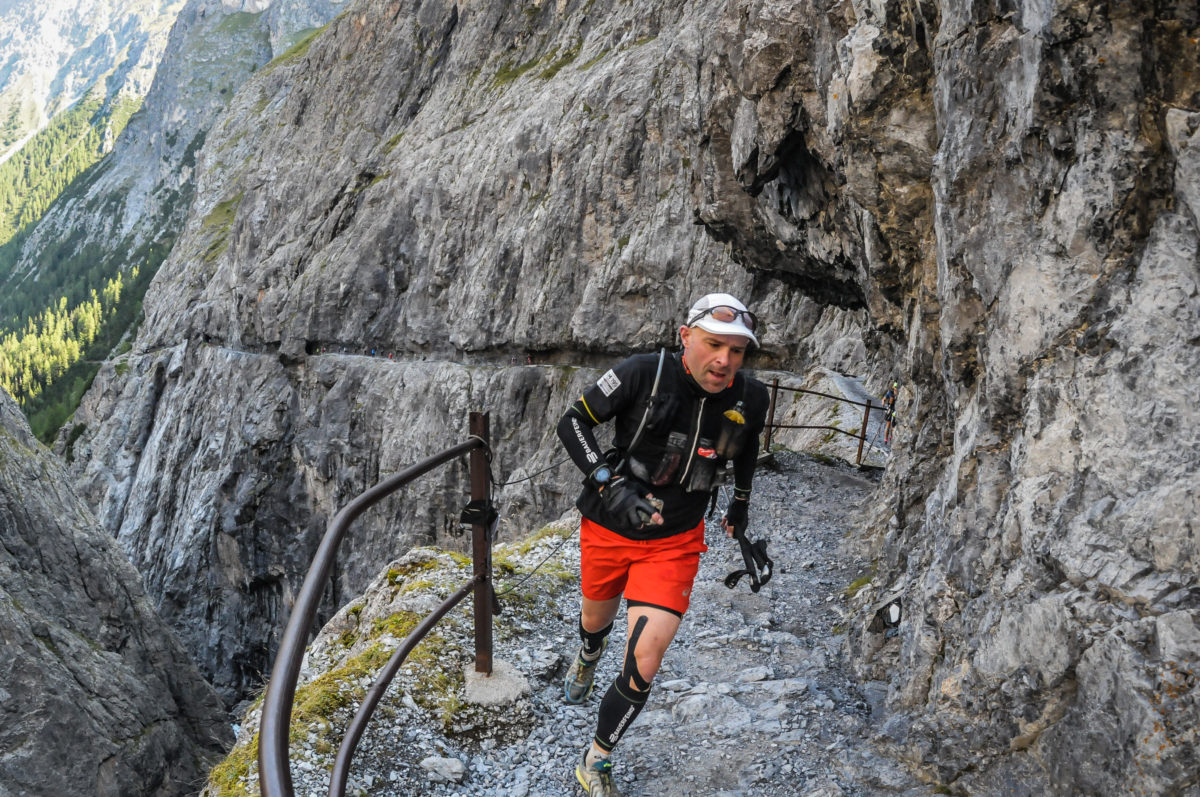
Elmar Sprink is now joined on our blog by Franky Bauknecht, giving you helpful tips on running, trail running and more. In this article, Franky presents a range of jump and endurance exercises that you can do to boost your jump endurance and therefore help improve your running performance. Have fun trying them out for yourself ?
First-hand knowledge – exercises for you from Franky Bauknecht
We all know that, when it comes to running, it’s all about speed. You want to cover a certain distance in a certain time. There are various training methods for this, but unfortunately most of them don’t include strength training. However, strength training or jump endurance training will help you get faster, more agile, and more powerful, while at the same preventing injuries and improving your endurance, flexibility, and coordination. Often also known as plyometric training, it involves movements that are intended specifically to improve coordination and strength. The aim of these movements is to activate the fast-twitch muscle fibers, thereby initiating a stretch-shortening cycle. In other words, a muscle is first stretched and then quickly contracted. This enables your body to develop greater strength in each of the exercises, thus helping you to improve your strength and speed without having to expend more energy.
The exercises I’ve put together for you below can be done as a separate workout or included in your running session to add some variety. As always, to get results you need to do the right number of exercises with an appropriate number of reps.
One important point before you start: Before starting your workout, it is vital that you warm up the corresponding muscle groups and get your joints moving. Never start a workout without doing a warm-up first!
10 endurance and jump exercises for runners
Forward jumps
- A classic double leg forward jump. Swing your arms as you hop.

Frog jumps
- A classic double leg forward jump, but landing in a deep squat and jumping out of the squat again. Keep your arms behind your body and don’t swing them for momentum.

Snowboard jumps
- A classic double leg jump. As you jump, do a half rotation with your body and land again with your feet turned 180 degrees from where they started.

Skater jumps
- Starting on one leg, jump diagonally forward and land on the other leg.

Squat jumps
- Jump upward from a squat position. Lift your arms above your head as you jump to propel you.

Plyo jacks
- Start from a squat and do a jumping jack. Your arms and legs should be stretched out to the side as you jump.

Single leg deadlift hops
- Stand on one leg with your other leg stretched out behind. Then jump up, landing on your other foot and stretching your jumping leg out behind you so you’re in a “weighing scales” position. Now jump out of this position again and land on the other foot.

Split squat jump
- Start with one leg forward, bent at 90 degrees. Go down into a squat, with the other leg bent behind you. Jump upward out of this position, switching legs as you jump.

Plank skiers
- Start in the plank position and with both legs together jump to the left and right of your body and slightly forward. Jump back to plank position and then repeat on the other side.

Other endurance and jump training exercises that you can do are basic exercises for runners, such as skipping, butt kicks, and high knees, but also burpees, x-hops, etc.
With all plyometric exercises, you can vary the way you do them and make them harder. Some plyometric exercises should also be done on one leg. Just make sure you do the same number of reps on each leg to avoid muscular imbalance. You can also make the exercises harder by increasing the distance you jump, by jumping different heights with the help of hurdles or other objects, or even by introducing ankle or wrist weights.
These instructions for endurance and jump training exercises are intended solely for information and to provide motivation. We do not accept any liability for exercises that are carried out incorrectly or any associated injuries or health problems. If you would like to do intensive fitness training please seek the advice of a professional, and get a health check with your doctor before carrying out any physical activity.
Thanks for a fantastic endurance and plyometric workout, Franky ? We’re excited to see what you’ve got in store for us next time! We bet you’re excited too.
Source: SPORT education/events, Frank Bauknecht